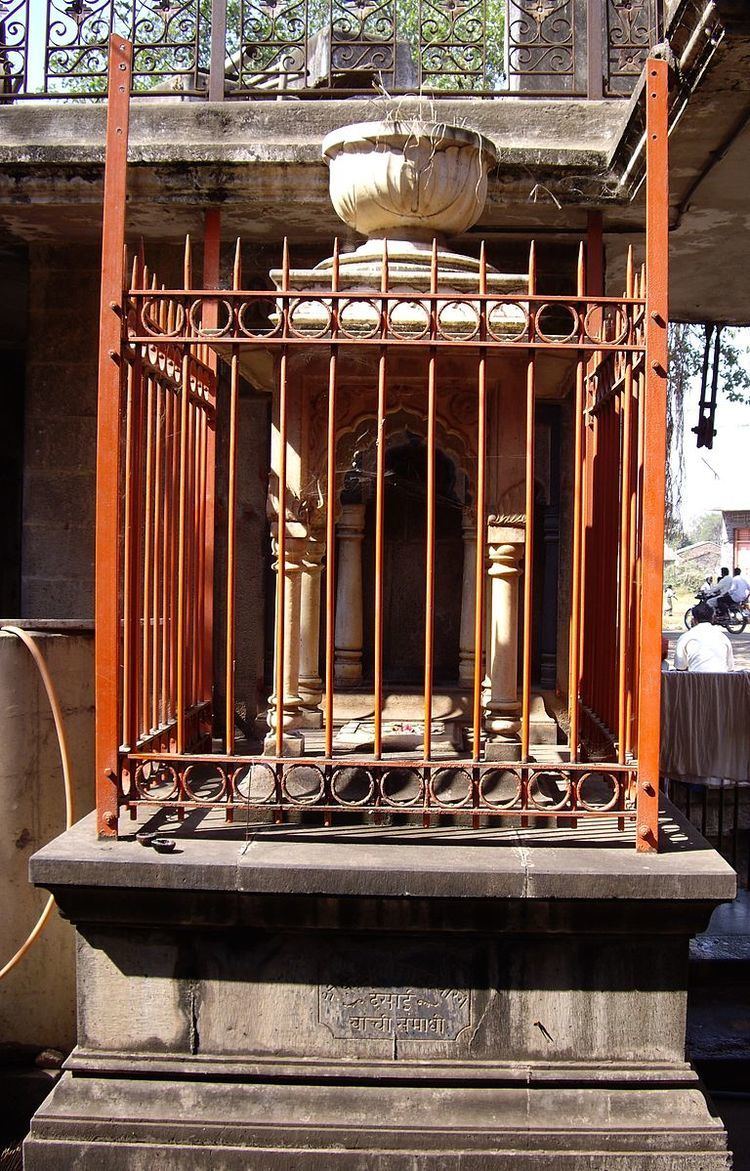 | ||
Gharge-Desai-Deshmukh (once rendered as Sur-Deshmukh) was a Maratha dynasty and one of the oldest existing Maratha Sur-Deshmukhs of Nimsod in Satara District. The family is Agnivanshi Kshatriya, one of the most ancient in [India]
History
Rana Ratansingh Alias Ranoji Royal from Rajputana (Rajasthan) and ancestor of the family received the Sur-Deshmukhi of Nimsod along with 72 villages from the Delhi Emperor Muhammad bin Tughluq in 1342 during his peninsular campaign and in 1536 family received Various assets from the Ibrahim Adil Shah I ruler of Bijapur Sultanate in the Shirol area,and in 1615 by Ibrahim Adil Shah II in Raibaj and Kittur and remained as one of the Largest Deshmukh of Adil Shahi.
During the Maratha rule, the family served as the important milestone of Maratha Empire with blood relationship with various ruling families of those days, were in forefront in continuous War of 27 years between 1682 to 1707 that resulted in the end of the Mughal Empire in India and brought most of the sub-continent under Maratha control. In 1732, Abbasaheb Alias Yashwantrao Gharge- Desai-Deshmukh received Saranjam of 12 more villages and noble title of Saranjamdar-Deshmukh from Maratha King Chattrapati Shahu of Satara for lieu of military service rendered to the state and total Vatan of 84 villages in Nimsod Pargana was made hereditary.
From time to time, Deshmukhs of Nimsod supplied quality horses to the Maratha Army. In 1761, Son of Abbasaheb, Sardar Sidoji Gharge-Desai-Deshmukh along with his 2000 cavalry participated as part of Maratha Army in one of the largest battles fought in the 18th century, the Third Battle of Panipat and was brutally killed by the Afghan Ruler Ahmad Shah Abdali. He was also part of the Maratha army which defeated the first Afghan invasion of India in 1751, and falged Maratha flag on Attock Khurd,and brought present day North West Frontier province of Pakistan under Maratha Control.
After the Third Anglo-Maratha War in 1818, Nimsod become the Part of British Territory and lost its importance. Deshmukhs of Nimsod were entitled for a nominal annual pension of Rs 6000/ by British. At that time, some families of Gharge Dehmukh's moved to Shirol to earn livelihood because Nimsod was an arid region with very scanty rainfall. Sardar Sidoji's Grandson Yashoji (Shirol Branch) acknowledged the changing circumstances and introduced the family to business. The Shirol branch of Gharge-Deshmukh's acquired the surname Desai which was prevalent amongst the landlords of South Maharashtra & Karnataka. Deshmukh title was almost dropped except for its occasional use in marriage invitation cards. So much so that people in Shirol are not even aware of this Deshmukh title now. They got into the business of money lending (Sahukari) and through this profession, the Shirol branch of Gharge-Deshmukh's acquired wealth, name and fame in Kolhapur District.
During the British Raj, Shrimat Bhausahaeb Desai held huge loans to various landlords (Zamindars) of those days and constructed the Vithal temple as memorial of Shrimant Abbashaeb in Shirol which is masterpiece of Maratha architecture.
During the Indian independence movement, [Sardar Dinkarrao Gharge-Desai(Deshmukh)] served as the close associate of Mahatma Ghandhi and one of the National Leaders of Indian National Congress and was sent for four years rigorous imprisonment in Katewar in Gujarat in 1930 for participating in Dandi Salt Satyagraha with Mahatma Ghandhi and again for 4 years in yerawada in Pune During Quit India Movement in 1942 for removing Union Jack flag and putting Indian Tri-Colour on Shaniwar Wada in Pune. He remained as one of the highly respected leaders of Indian freedom Movement.Mahatma Ghandhi used to call him as "Dinkarbhai". He was awarded with special Galantry bronze medal by Prime Minister Indira Ghandhi in 1971 for his contribution to Indian freedom movement.
Number of land extracts (or records) from Shirol tehsil has Gharge-Desai family names on it though the property now belongs to different people. Family has agricultural land and properties in a couple of villages in Shirol tehsil of Kolhapur District running into a few hundred acres. The Vithal temple is managed by a trust.
